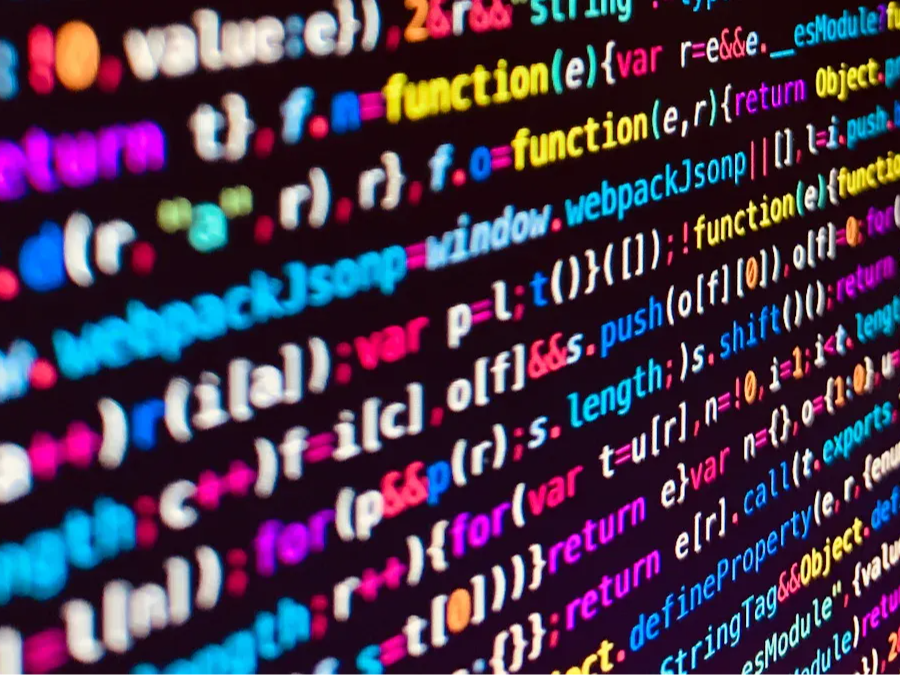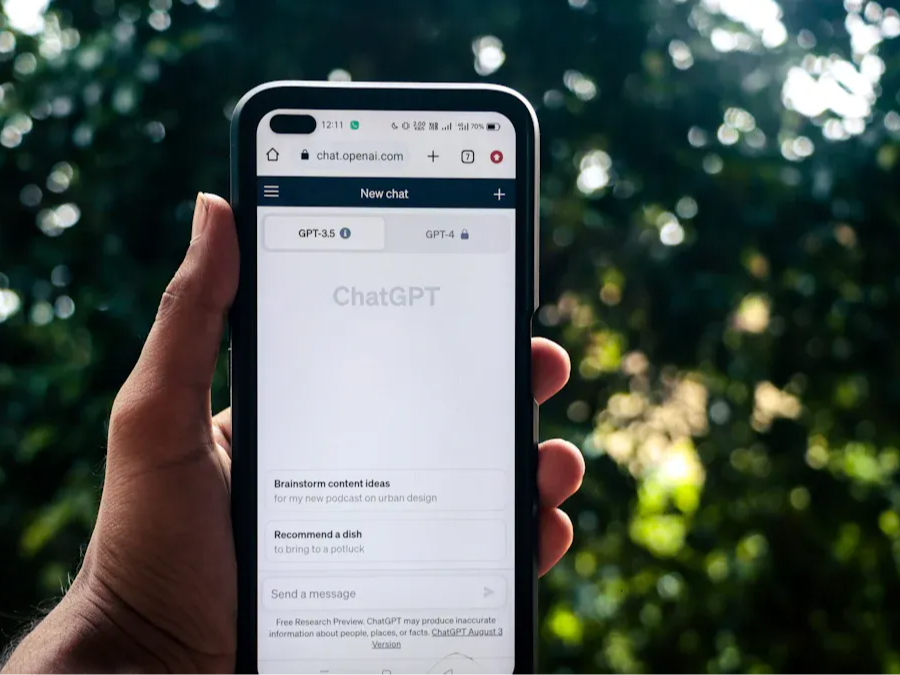What is AI Image Generation?
In just a few years, AI image generation has gone from a niche tech tool to a mainstream creative powerhouse. Whether you're an artist, marketer, or just someone who loves experimenting with visuals, this technology lets you create stunning images simply by typing a prompt.
So how does it work? Behind the scenes, advanced machine learning models—like GANs (Generative Adversarial Networks) and diffusion models—analyze your input and turn it into a visual masterpiece. Tools like DALL·E 3, Midjourney, and Stable Diffusion have become household names, making it easier than ever to turn imagination into reality.
Some platforms even let you tweak existing photos—changing colors, adding elements, or switching styles completely. And with the help of tools like ChatGPT-4o, writing the perfect prompt to get the result you want has become a whole lot easier.
What’s most exciting is how accessible all of this has become. Once the domain of engineers and developers, AI image tools are now used by solo creators, small businesses, and global companies alike. By 2025, AI image generation isn’t just a trend—it’s becoming a key part of how we create content across industries, from entertainment to e-commerce.
The Pros of AI-Generated Images
More than just a cool tech gizmo, AI image generation is revolutionizing the way we create and distribute visual content. Here are five significant benefits it will bring in 2025.
1. Creative inspiration like never before
One of the most exciting things about AI art tools is their ability to ignite a creative spark. Platforms like Midjourney and DALL-E 3 dare users to dream up anything from surreal dreamscapes to detailed illustrations. If you're stuck in a creative rut, these tools can help you think outside the box and experiment with styles you've never encountered before, such as fusing cyberpunk with Renaissance or mimicking Van Gogh's brushstrokes to create a new work.
And you don't have to start from scratch - tools like the Image-to-Image Generator allow you to reinvent, mix and match, and recreate what you've already done.
2. Fast and efficient, inspiration hits the ground running
In the creative industry, time is money. While traditional designs often take hours or even days, AI can generate high-quality images in seconds. This speed makes it easier to test different ideas without worrying about running out of time or budget.
Whether you're a content creator making video cover art or a marketer looking to quickly output advertising materials, tools like Stable Diffusion allow you to save time and effort and produce efficient output.
3. Lower cost, everyone can use it
In the past, when you made visual content, you either spent money on buying gallery images or hiring designers, which was expensive. Now, with AI platforms like DALL-E 3, you can generate customized images at a fraction of the cost. This allows freelancers, small teams, and startups to play with visual creativity.
You don't need advanced software or years of art skills - just an idea and a clear cue.
4. All-around personalization
AI tools aren't just fast, they're accurate. Want a specific lighting style? Want an exclusive background? You can tell AI what to do. Apparel brands can use it to design visuals that fit their brand, and game developers can get down to the nitty-gritty of their characters.
The Image-to-Image tool goes even further, letting you directly modify existing images, such as replacing backgrounds, adjusting color tones, adding elements, and more. And with ChatGPT-4o's hint optimization, you can write effective hints more easily, so “what you see is what you get.
5. Global Collaboration without Geographic Limitations
AI breaks down the geographical boundaries of creativity. You can be a designer living in Tokyo and create something inspired by African art, or a marketer in Berlin and create a promotional visual on a Latin American cultural theme - AI makes cross-cultural integration a reality.
AI makes cross-cultural integration a reality. And it also makes remote collaboration much more efficient. Regardless of time zones, team members can work together in real time using tools such as Stable Diffusion, dramatically increasing the speed at which projects move forward.
The Cons of AI-Generated Images
While the benefits of AI image generation are impressive, the technology isn’t without its challenges. As more people embrace these tools, important concerns are emerging—ranging from ethics to quality and authenticity. Here are the key drawbacks you need to be aware of in 2025:
1. Ethical Gray Areas and Copyright Headaches
One of the biggest issues with AI-generated images is where the training data comes from. Most AI models, like DALL·E 3 and Stable Diffusion, are trained on massive datasets pulled from the internet—including copyrighted artworks, photographs, and illustrations. This raises serious questions: Who owns the image created by AI? Is it fair to replicate an artist’s style without permission?
These legal and ethical dilemmas are still evolving, with courts and lawmakers struggling to keep up. For artists, this can feel like an invasion—seeing their style imitated or their work indirectly used without credit or compensation. Until clear rules are in place, creators operate in a legal gray zone.
2. The Authenticity Dilemma: Where’s the Soul?
Can an image generated by a machine truly have meaning? Critics argue that while AI can produce stunning visuals, it often lacks the emotional depth and narrative purpose of human-made art. There's no lived experience, no personal journey behind the brushstrokes—just an algorithm responding to text.
And with more people using the same tools and styles, there’s a growing concern about visual sameness. The art may look polished, but sometimes it feels empty. Even with features like image-to-image editing, the end result can lean toward refinement rather than originality.
3. Technical Limitations Still Exist
AI has come a long way, but it still struggles with complex scenes and fine details. Try asking it to create a busy street market with layered depth and multiple people, and you might end up with strange distortions—like hands with too many fingers or warped faces. Stable Diffusion, for example, can have trouble maintaining consistent spatial relationships in detailed compositions.
Yes, ChatGPT-4o helps with prompt engineering, and yes, post-editing can fix a lot—but it takes time, skill, and patience. The promise of speed can quickly turn into a rabbit hole of refinements.
4. Deepfakes and the Rise of Visual Misinformation
With great power comes great risk. One of the darker sides of AI image generation is its potential to create deepfakes—images that look real but are entirely fake. From fake news to manipulated political content, the misuse of hyper-realistic visuals poses serious threats to public trust.
It’s not just about trickery. AI tools that allow easy editing of existing images (like background swaps or face replacements) can be weaponized to mislead, defame, or spread false narratives. As these tools get better, the need for strong safeguards and media literacy becomes more urgent.
Future Prospects of AI Image Generation: Finding the Right Balance
Looking ahead, AI image generation is poised for even more innovation. As algorithms evolve, we can expect improvements in image accuracy, detail, and nuance. Tools will become more intuitive, and the line between artist and machine collaborator will continue to blur.
Smarter Tools, Smoother Workflows
Platforms like DALL·E 3, Midjourney, and Stable Diffusion are constantly being updated. Future iterations are likely to offer better control over image composition, finer text-to-image precision, and even real-time generation with voice commands or sketches. What once required dozens of iterations might soon be achieved in one or two tries.
In tandem, tools like ChatGPT-4o will become more deeply integrated, helping users write better prompts, tweak their creative ideas, and co-develop projects—almost like having a creative assistant by your side.
Human + AI: A Creative Partnership, Not a Replacement
Rather than replacing artists, AI is increasingly being viewed as a collaborative partner. Many professionals now use AI to brainstorm, generate visual drafts, or enhance their existing work. For example, illustrators might use an AI-generated base sketch and then apply their own artistic flair, while marketing teams can rapidly prototype visuals and refine them with human insight.
This partnership opens the door to new creative workflows, blending intuition with automation.
The Role of Ethics and Regulation
With power comes responsibility. As AI becomes a staple in visual content creation, ethical frameworks and regulations will need to catch up. We’ll likely see clearer guidelines on ownership rights, copyright laws, and acceptable usage of training data.
Governments, tech companies, and creative communities are already pushing for transparency in AI models—where images come from, how they’re trained, and how they should be used responsibly. These efforts will be key to preserving trust in digital content.
Industry-Wide Integration
AI-generated images are already transforming industries like advertising, gaming, film, and education—and the impact is only growing. Imagine interactive educational visuals that adapt to a student’s learning pace, or personalized movie concept art generated in seconds. The potential use cases are vast.
Businesses that embrace these tools thoughtfully can scale content production, explore bold creative directions, and reach wider audiences faster than ever before.
In Conclusion: Navigating the Dual Nature of AI Image Generation
AI image generation is one of the most powerful creative tools of our time. It breaks down traditional barriers to entry, accelerates content creation, and empowers users of all skill levels to turn imagination into visuals. From one-person startups to global brands, its advantages are undeniable: creativity on demand, faster workflows, lower costs, and massive customization.
But the technology also demands caution. Ethical ambiguity, questions of authenticity, technical quirks, and the threat of misinformation remind us that AI is not a silver bullet. It’s a tool—one that must be guided by human values, oversight, and creativity.
In 2025, the future of AI image generation depends on how we use it. The smartest creators and companies won’t just ask, “What can AI do for me?”—they’ll ask, “How can I use AI responsibly and meaningfully?”
Whether you're an artist, a marketer, or just an enthusiast, understanding the promise and pitfalls of this technology will help you make smarter, more impactful decisions in a rapidly changing digital world.
FAQS
1. What is AI image generation and how does it work?
AI image generation is a technology that creates images from text prompts using advanced machine learning models like GANs (Generative Adversarial Networks) and diffusion models. Tools such as DALL·E 3, Midjourney, and Stable Diffusion interpret your description—like "a futuristic city at sunset"—and turn it into a visual output. These tools also allow you to modify existing images by changing colors, styles, or adding elements, making them incredibly versatile and user-friendly.
2. What are the main benefits of AI-generated images?
- Speed & Efficiency: Create high-quality visuals in seconds, perfect for fast-paced content creation.
- Lower Cost: Avoid expensive design fees or stock image purchases—great for freelancers and small teams.
- Creative Inspiration: Break creative blocks and explore new artistic styles or mashups (e.g., cyberpunk + Renaissance).
- Customization: Easily specify lighting, style, or layout—AI follows your vision closely.
- Global Collaboration: Eliminate geographic barriers—teams can work across borders and time zones in real time.
3. What are the drawbacks or risks of AI image generation?
- Ethical & Copyright Issues: AI is trained on data that may include copyrighted works, raising legal and moral questions about ownership and artistic credit.
- Lack of Authenticity: Critics argue AI-generated art can look polished but often lacks emotional depth or personal meaning.
- Technical Limitations: AI may still struggle with complex compositions or accurate human features, leading to strange distortions.
- Misinformation & Deepfakes: AI can be misused to create fake or misleading visuals, raising serious concerns about trust and digital safety.
4. What does the future of AI image generation look like?
The future holds smarter, more intuitive tools that offer:
- Greater control over composition and style
- Voice or sketch-based generation
- Seamless integration with tools like ChatGPT-4o for better prompt writing and ideation AI will be seen less as a replacement and more as a creative collaborator, helping artists and teams prototype faster and refine ideas more effectively. Ethical frameworks and copyright regulations are also expected to mature, supporting responsible use.
5. How can I use AI image generation responsibly?
- Respect Copyrights: Avoid replicating artists' styles without permission.
- Be Transparent: Clearly disclose when content is AI-generated, especially in public or commercial use.
- Use AI as a Creative Tool, Not a Crutch: Let AI assist with ideas or drafts, but bring your own creativity into the final result.
- Avoid Harmful Uses: Don’t use AI tools for disinformation, defamation, or unethical image manipulation.








